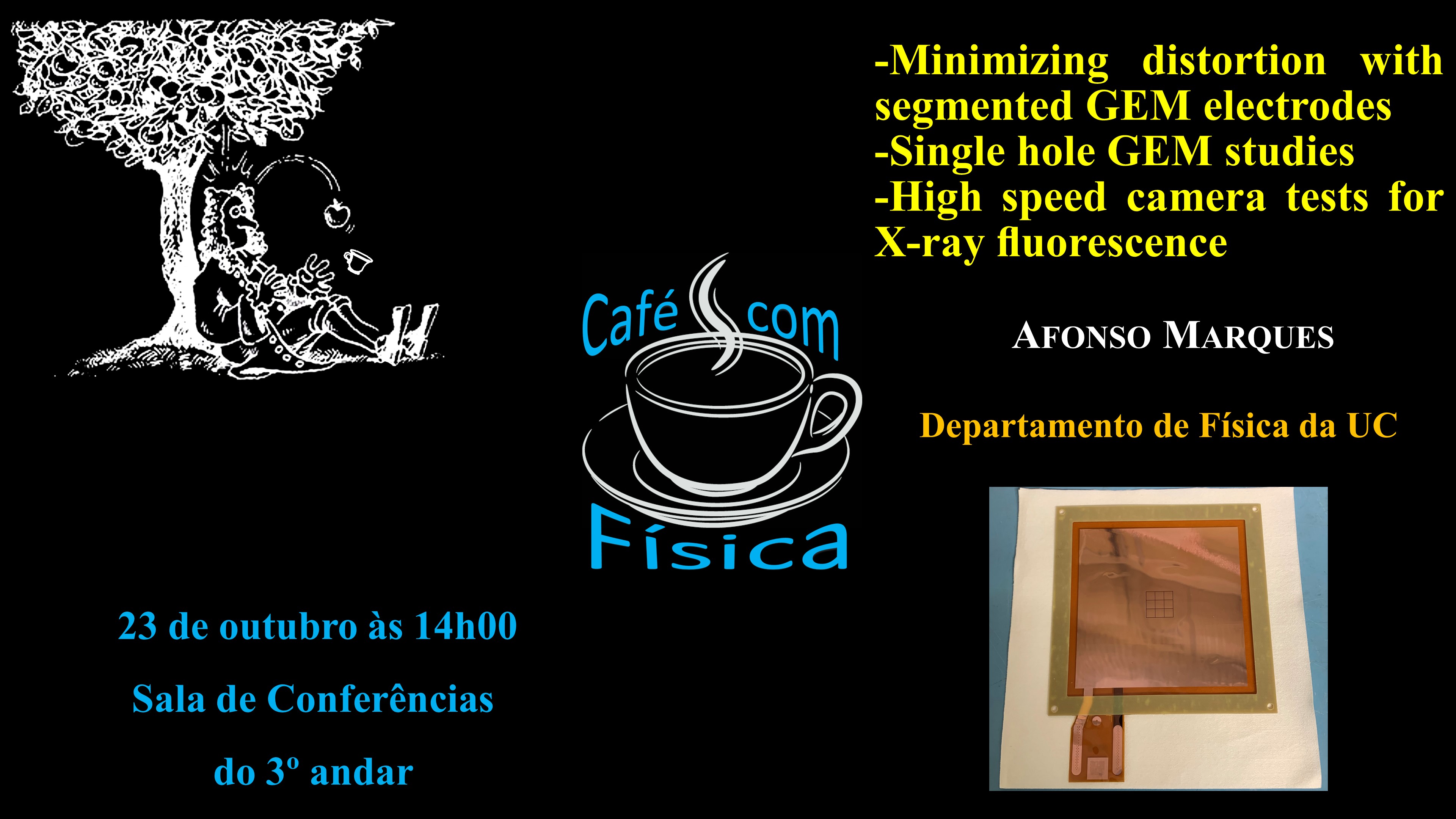Minimizing distortion with segmented GEM electrodes and DLC based sectorization. Single Hole GEM studies
by
Sala de Conferências
Departamento de Física

Segmentation plays an important role in the stability of a GEM-based detector, but also implies signal distortion in the sectorized region. The sector border effect in the triple-GEM tracking detector for COMPASS is one example of distortion. A triple-GEM detector using two standard GEMs and one single side segmented GEM was assembled and operated in Ar/CF44 80/20 % gas mixture to study the influence of different sectorization patterns and having DLC deposited in the sectorized area. Optically read out images were recorded with CCD camera and show there is a clear improvement in having full holes and random sectorization pattern. Also, the DLC may have a slight effect on improving the distortion along the sectorized gap, specially when the segmented electrode of the GEM is on top orientation.
Studying how the emssion profile spreads after passing through a GEM is also important. Previous results show that, while covering one sector of a GEM, the presence of light in optically recorded images was visible. This might be explained by having a very wide emission profile width. Using a single hole GEM and similar setups as previously mentioned, the width of the emission profile was determined.
Filipe Veloso e Pedro Costa
